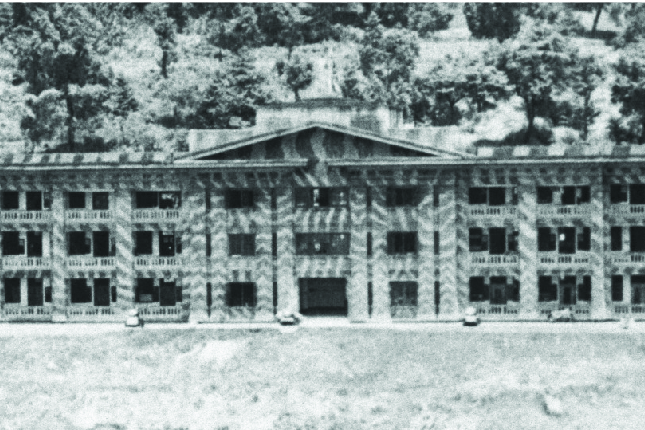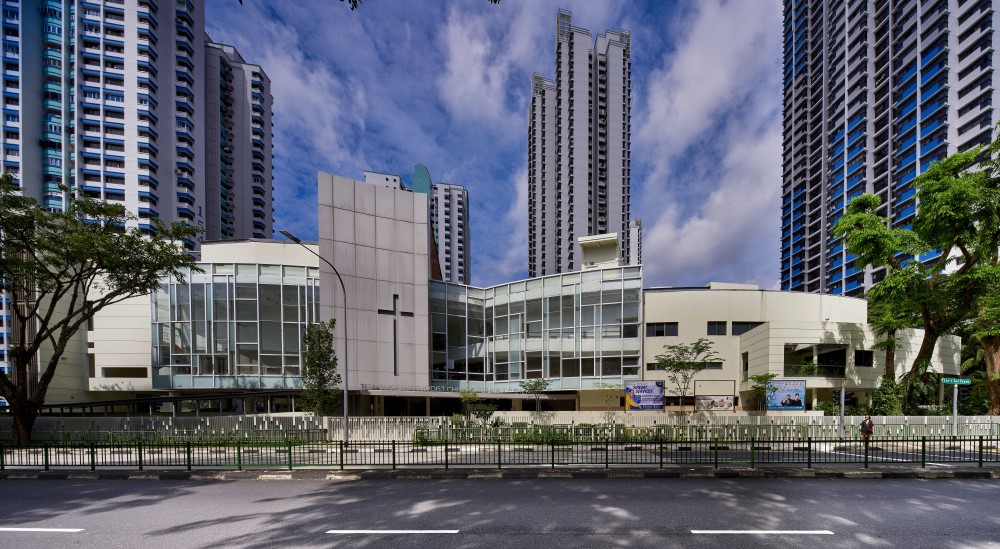TL;DR
This visual diary takes its readers on an adventure Through Nature around the Bras Basah.Bugis precinct. Join NAFA Arts Management students on a walkthrough as they document their observations and research of the many natural elements waiting to be discovered at Fort Canning, Raffles’ Garden, and Artisan’s Garden. Focusing on the topics of plants and archaeology in Natural Heritage, this essay will present a holistic overview of the prominent presence of natural heritage in the precinct’s history.
Text by Nanyang Academy of Fine Arts
The Bras Basah.Bugis precinct is undeniably one of the oldest districts in Singapore. Since the 19th century, it has been home to many diverse communities, arts groups, and national monuments, but also to some of our commonly seen flora and fauna in Singapore. Often associated with historical landmarks such as the former St. Joseph's institution and Maghain Aboth, the precinct brings together some of the most tangible symbols of Singapore’s history. A gem carefully tucked away behind the National Museum of Singapore, Fort Canning is home to Singapore’s first botanical gardens, where many hidden elements of natural heritage can be discovered. This photo essay will unravel the natural heritage of Fort Canning and the many treasures that it holds. From the magnificent Tree Tunnel with a towering Samanea Saman tree hanging over it, to the Raffles and Artisan’s Gardens, this photo essay will detail the natural heritage and archaeological history that BBB has to offer.

The first location of our walk takes us through the Fort Canning Tree Tunnel and up the iconic spiral staircase which leads explorers to a distinctive Samanea Saman tree that towers high above the tunnel. The Samanea Saman tree is easily recognisable by its umbrella-shaped crown that can reach 20m to 30m across! It is also known as Pukul Lima in Malay, which means “5 o’clock”. This is a reference to how the tree’s leaves fold at sunset, which used to be at 5P.M, before the Singapore Standard Time was changed.
Opened in 2007, the tree tunnel has become one of Singapore’s most iconic photography spots. With the beautiful crown of the Samanea Saman reaching over the tree tunnel, sunlight filters through the leaves to illuminate the spiral staircase below. This spot reflects Singapore’s relationship between man-made architecture and how our existing natural heritage adapts and complements the changes around it. The Samanea Saman tree has made this location its home before the existence of the tunnel, its strong foothold on Fort Canning being attributed to its tolerance for infertile and waterlogged soils. Despite Singapore's monsoon seasons, this tenacious tree stands tall till today, enhancing Fort Canning landscape as a symbol of Singapore’s natural heritage.

Fort Canning is home to several historical gardens, some of which are named after symbolic figures in Singapore’s history. A few minutes of walking from the Tree Tunnel will take you to spots like the Raffles Garden and the Sang Nila Utama Garden which is a hidden treasure trove of flora and fauna. Countless species of ginger, like the Red Ginger pictured above, can be found planted alongside the brick paths, accompanied with iconic flowering plants like the periwinkle.
The Red Ginger in particular, can be found planted alongside Singapore’s roadsides and in other tropical areas outside of Asia such as Hawaii. Since its introduction into the Singaporean landscape, the plant has been thought to hold medicinal properties in its stem. Easily identified by its use in traditional medicine, the Alpinia Purpurata is used to treat a wide range of health conditions, including morning sickness, nausea, and cardiovascular disease.

In the gardens, you will find an abundance of vibrant, flowering plants. One such example is the periwinkle, a perennial plant native to Madagascar. Having been introduced into Singapore's natural landscape, the shrub shares many medicinal traits with the Red Ginger. The Red Ginger is also recognised for its many traditional medicinal properties, even outside of the continent of Asia - its leaves and flower petals are boiled to create teas referred to as “solar tea”. It is often sipped throughout the day to help with conditions like toothaches and chest pain. Even modern medical research has shown that certain extracts from the plant can be used in anti-cancer drugs, to treat diseases such as leukaemia and Hogkins’ Disease.
However, the Catharanthus Roseus, also known as the Pink Periwinkle, was initially grown as a ground cover, no doubt due to its vibrant, eye-catching pink flowers. Holding the “Exotic” status under Singapore’s National Parks database, the relatively drought-tolerant plant can easily be spotted in shrubs, planted alongside neighbourhood streets and on roadsides.
“Wildness reminds us what it means to be human“
- Terry Tempest Williams

Found amongst the leafy and forested landscape of Fort Canning are some easily recognisable plants that contribute to other facets of heritage, such as food. One favourite of Singaporeans and commonly found in most households is pandan. Often used in cooking and baking desserts and local dishes it is also most famously known for making up the bulk of kaya, a traditional spread eaten with bread.
Pandan has been found to host medicinal properties as well. Used in traditional medicine to alleviate pain symptoms, specifically that of arthritis and joint pain, it is a plant that has cemented its place in Singapore’s natural heritage landscape. Like many other mainstay ingredients in Singaporean kitchens, the pandan is a plant whose nativity we share with the wider Southeast Asian region. This is not a bad thing though, because iconic heritage elements, such as the pandan, help the region foster a unified tale of history and heritage.

Yet another treasure trove of Fort Canning is the Artisan's Garden that was said to be built around the 14th century amidst the hill’s flora and fauna. Left with only its remains today, it is currently an excavation site and was formerly a craftsman’s workshop and living quarters. While the garden no longer withholds as much flora and fauna as it once did, it still showcases the many natural elements that lie below the grounds of Fort Canning. With extensive research detailing the specific soil layers and brickwork found in the garden’s foundations, educational panels are placed around the Artisan’s Garden to help visitors uncover the rich history of this location. The Artisan’s Garden has now become an integral part of the natural heritage found in Fort Canning.
Did you know that Fort Canning holds a shrine dedicated to Sultan Keramat Iskandar Shah, the last king of Singapura and the first Sultan of the Malacca Sultanate? In 1985 and 1988, excavation works near the keramat (shrine) revealed 3 soil types below the top layer. These included red laterite (which was not native to Fort Canning at the time), a dark brown soil that dated back to the 14th century, and a natural yellow soil that had formed due to the weathering of the sandstone bedrock over time. The garden even has exhibits fitted with magnifying lenses for visitors to look at the soil types in detail!

The image above is one example of the type of exhibits found at the Artisan’s Garden. A glass showcase holding fragments of traditional porcelain china can be seen, with the fragments laid out on the dirt. Many of the garden’s exhibits feature detailed geographical samples, including preserved fragments of china, limestone collections, and sediment types from the ground beneath the garden. Despite the site having been abandoned before discovery, the presence of early 20th century artefacts reaffirmed beliefs that the area had previously been occupied. It also showed how prevalent and extensive trade was at the time, that goods from China and around the region had been found in Singaporean lives.
With your newfound knowledge of natural heritage found integrated with the rich histories of Fort Canning, can you identify other elements of Natural Heritage found around you? We encourage you to explore the natural heritage that is still present in Singapore’s landscape today.
Some of the research done in this essay takes reference from traditional medicinal uses that may remain unproven by modern medicine. When exploring the natural heritage of Singapore, we would also like to encourage our readers to love and care for our flora and fauna. Please be reminded that foraging is illegal.
About Partner
Established in 1938, Nanyang Academy of Fine Arts (NAFA) is Singapore’s pioneer arts institution. The academy is known for its rigorous and high-quality curriculum, innovative and practitioners-led teaching approach, diverse artistic creations and community outreach.
This article was developed for Singapore Heritage Fest 2022.
















